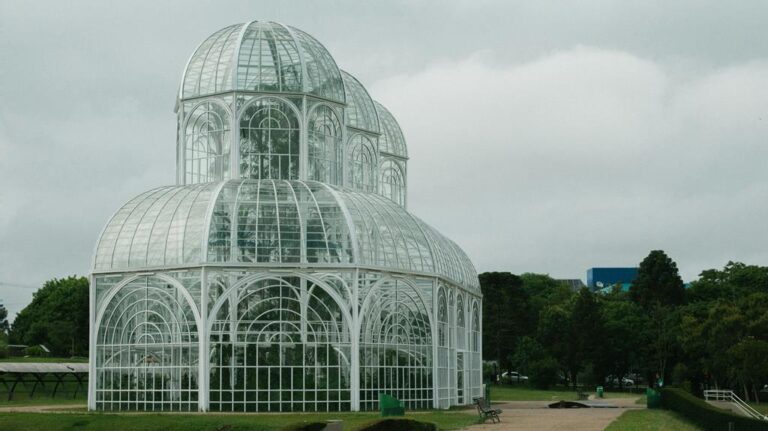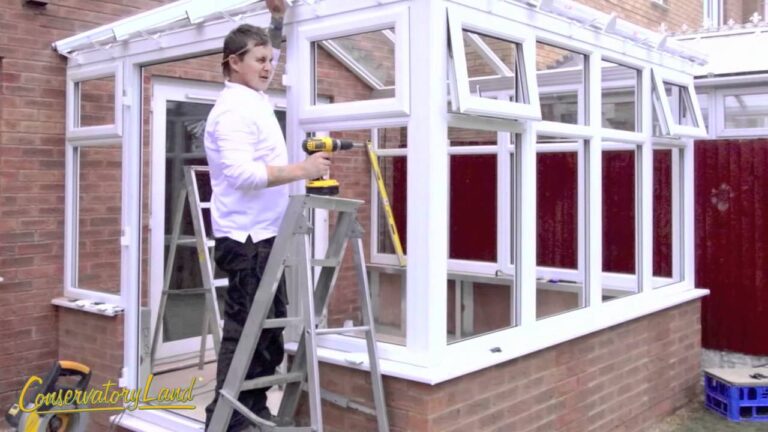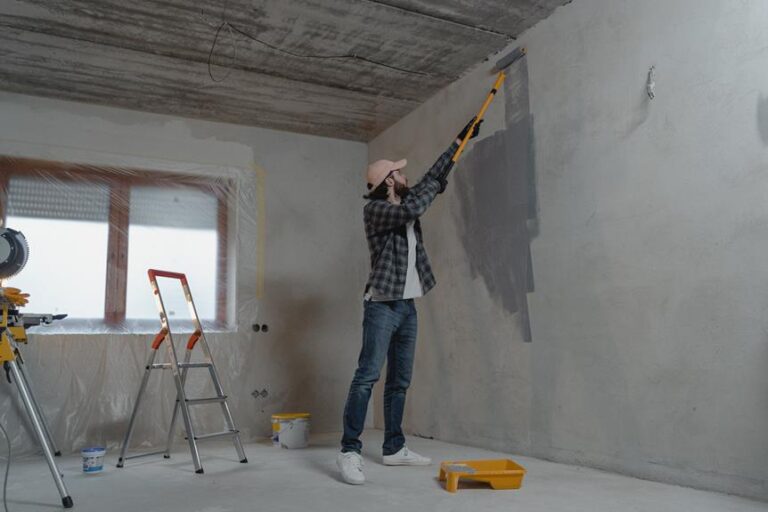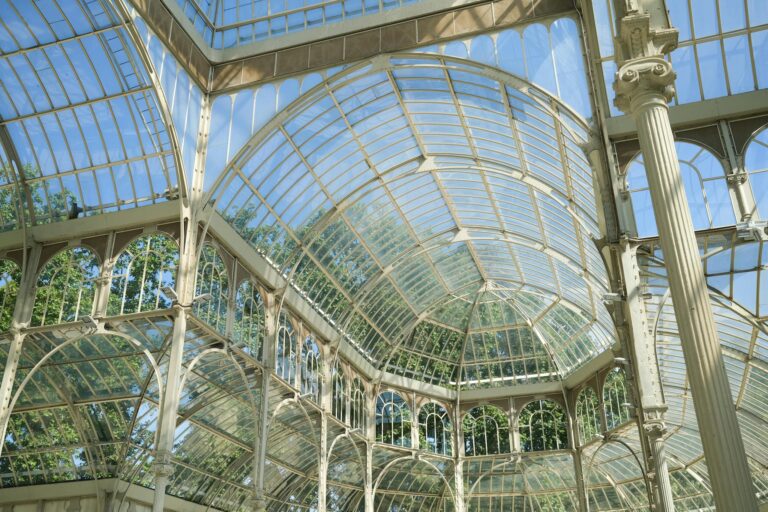Wooden Conservatory Plans
Embarking on the journey of designing a wooden conservatory requires a nuanced understanding of both the aesthetic appeal and functional demands of such a structure. As we explore the initial steps in planning, from selecting the right timber to navigating legal requirements, it becomes clear that the process is as intricate as it is rewarding.
The choice of wood, not merely for its beauty but also for its durability and environmental impact, sets the stage for a project that promises to enhance any living space. However, the complexities of design, budgeting, and construction lie ahead, inviting further examination into how these challenges can be adeptly navigated to achieve a conservatory that is not only a testament to timeless craftsmanship but also a functional, cherished part of the home.
Key Takeaways
- Wooden conservatories offer luxurious aesthetics, enhancing property value and providing sustainability benefits.
- Customisation options allow for a design that suits lifestyle and space, with a focus on natural light and ventilation.
- Selection of durable materials like oak and cedar, combined with energy-efficient measures, ensures longevity and maintenance ease.
- Compliance with planning permissions and safety regulations is essential for a successful project, alongside regular maintenance practices.
Benefits of Timber-Framed Conservatories
Timber-framed conservatories are known for their luxurious aesthetics and warmth. They offer significant advantages over aluminium or uPVC structures, including a notably extended lifespan. These conservatories benefit from the inherent durability and traditional appeal of timber, making them a sought-after option for homeowners looking to enhance their property’s value and aesthetic appeal.
Additionally, with diligent maintenance, the beauty and functionality of timber-framed conservatories can be preserved, ensuring they remain a valuable addition to any home for years to come.
Overview of the Building Process
Delving into the construction process of conservatories, it becomes evident that those framed with timber not only provide a distinct aesthetic appeal but also offer substantial benefits in terms of durability and property value enhancement. Wooden conservatory plans meticulously outline the plan for a timber-framed conservatory, highlighting:
- Luxurious, warm feel
- Extended lifespan with proper maintenance
- Traditional, durable material choice
- Customisation and craftsmanship options
Initial Steps in Planning a Wooden Conservatory
The initial phase in planning a wooden conservatory involves a meticulous assessment of the available space within your garden. This includes considering factors such as sunlight exposure and the overall spatial layout to ensure optimal placement.
Concurrently, a comprehensive understanding of timber framing is essential. This encompasses knowledge on the various types of wood suitable for construction, their durability, and maintenance requirements.
These preliminary steps are crucial in laying a solid foundation for the design and construction process. They facilitate a seamless integration of the conservatory with your property’s existing architectural style and environmental conditions.
Assessing Your Space and Needs
Initiating the planning process for a wooden conservatory necessitates a thorough assessment of your available garden space and specific lifestyle needs to ensure the design is both functional and aesthetically pleasing. Essential considerations include:
- Measuring garden dimensions for conservatory sizing.
- Tailoring design to intended use and lifestyle.
- Evaluating sun exposure, views, and privacy.
- Considering impacts from existing structures or landscaping.
Consulting a professional ensures compliance and feasibility.
Understanding Timber Framing Basics
Embarking on the construction of a wooden conservatory necessitates a foundational understanding of timber framing basics. This technique is characterised by the use of large wooden beams and posts to establish the structural framework. This age-old method is valued for its strength and durability. It incorporates mortise and tenon joinery to connect elements securely without modern fasteners. This promotes open, airy spaces and a timeless, natural aesthetic integral to both traditional and contemporary conservatory designs.
Exploring Wooden Conservatory Options
When exploring wooden conservatory options, it is essential to consider the balance between cost, quality, and the timeframe for construction. Customisation and design choices significantly influence these factors, where choosing particular shapes, styles, and materials like premium treated hardwoods can affect both aesthetic appeal and functionality.
It is vital to assess these elements carefully to guarantee that the final structure complements the property’s theme while providing durability and energy efficiency for optimal year-round use.
Balancing Cost, Quality, and Time
Exploring wooden conservatory options necessitates a careful consideration of the equilibrium between cost, quality, and time, with offerings that begin at £7995. Premium quality treated hardwoods ensure durability and superior aesthetics. Options include:
- Customisable designs for personal or property theme alignment.
- Quick assembly kits for time efficiency.
- Fully constructed options for convenience.
- Trade options for builders, developers, and architects, enhancing cost-effectiveness.
Customisation and Design Choices
After considering the balance between cost, quality, and time, one finds that wooden conservatories distinguish themselves further through extensive customisation and design choices. Options span Victorian, Edwardian, to bespoke shapes, employing premium hardwoods like oak for longevity and beauty.
Unique elements, such as custom curved glazing bars, enhance aesthetics, while adaptability ensures a seamless fit with existing architecture, offering a truly personalised conservatory experience.
Setting a Realistic Budget
In the planning phase of constructing a timber-framed conservatory, a critical step is to accurately estimate costs to ensure financial feasibility. This involves a thorough analysis of expenses related to materials, labour, and any additional features, along with obtaining multiple quotations for a competitive pricing landscape.
Furthermore, incorporating cost-effective building strategies and allocating a contingency fund are essential practices for adhering to the budget without compromising on quality or design.
Estimating Costs for Timber Framed Conservatories
Setting a realistic budget for a timber-framed conservatory requires understanding that average costs can fluctuate significantly, ranging from £8,000 to £25,000, based on various factors including size, style, and additional features. Key cost-influencing factors include:
- Glazing options
- Roofing materials
- Customisation vs. DIY kits
- Professional installation costs
Considering these elements will ensure a comprehensive approach to budgeting, aligning with the project’s scope and desired outcome.
Tips for Cost-Effective Building
Embarking on the construction of a wooden conservatory necessitates a well-defined budget that accounts for both expected and unforeseen expenses. Researching average costs and considering the desired size, style, and features will inform a realistic budget.
Prioritise cost-effective materials and finishes that maintain quality, and gather multiple quotes for comparative analysis. Additionally, ensure the budget encompasses foundation work, insulation, and finishing touches to avoid unexpected financial strains.
Designing Your Timber Frame Conservatory
In the process of designing your timber frame conservatory, the selection of materials, adherence to architectural styles, and incorporation of features play pivotal roles.
Opting for high-quality timber not only ensures structural integrity but also influences the aesthetic appeal and lifespan of the conservatory.
Consideration of these elements in harmony with the existing architectural design of your home is essential for achieving a seamless and functional addition to your property.
Selecting the Right Materials
Selecting the right materials is crucial for the design and longevity of your timber frame conservatory. Choices range from high-quality timber like oak for the frame to durable roofing materials such as slate or clay.
- Use oak for the frame for its durability and strength.
- Cedar wood is ideal for cladding, offering natural decay and insect resistance.
- Opt for slate or clay roof tiles for longevity.
- Treat the timber frame with preservatives to protect against weather damage and rot.
Architectural Styles and Features
Having explored the importance of choosing the right materials for your timber frame conservatory, we now turn our attention to the architectural styles and features that can further define and enhance its design.
Tailored to Victorian, Edwardian, or custom aesthetics, these conservatories boast decorative curved glazing bars, a spectrum of colour options, and premium timbers.
The customisable nature accommodates unique spaces and details, emphasising top-notch craftsmanship and architectural belonging.
Structural Considerations for Stability
When planning a wooden conservatory, prioritising structural considerations is essential to ensure both durability and safety. Professional assessment and advice are invaluable in identifying the specific needs for foundation preparation, choice of high-quality timber, and the frequency of maintenance and inspections required.
This approach not only guarantees the conservatory’s stability but also its longevity and compliance with any conservation area regulations.
Ensuring Durability and Safety
To ensure the durability and safety of a wooden conservatory, it is crucial to establish a solid and level foundation as the cornerstone of structural stability. Key factors include:
- Utilising high-quality, treated timber to resist rot.
- Implementing diagonal bracing and trusses for enhanced support.
- Designing an effective roof pitch for optimal water drainage.
- Conducting regular inspections for maintenance and timely repairs.
Professional Assessment and Advice
Consulting a structural engineer is a crucial step in evaluating the foundation and frame design of a wooden conservatory to ensure its stability. This assessment involves thorough consideration of soil conditions, load-bearing capacities, and local climate influences.
It’s essential to ensure the conservatory’s structure is properly anchored and supported, capable of withstanding external forces, thereby mitigating risks of settlement, subsidence, or issues on uneven ground for enduring stability.
Navigating Legal Requirements
In the planning and construction of a wooden conservatory, adhering to planning permissions and regulations is paramount. This involves consulting local councils or planning authorities to ensure all legal requirements, including compliance with building standards, are met.
Furthermore, understanding and applying permitted development rules and building regulations specific to conservatories is crucial for lawful construction and use.
Planning Permissions and Regulations
Navigating the legal landscape of planning permissions and regulations is a fundamental step in the construction of wooden conservatories in the UK, ensuring compliance with local and national standards.
Key considerations include:
- The size and location of the conservatory.
- Impact on neighbours and potential for the Neighbour Consultation Scheme.
- Regulations specific to conservation areas.
- The paramount importance of adhering to these regulations to avoid legal complications.
Compliance with Building Standards
Ensuring compliance with UK Building Regulations is a critical step in the construction of wooden conservatories. It involves addressing structural stability, fire safety, ventilation, thermal performance, and accessibility requirements. Obtaining Building Control approval certifies adherence to these regulations, helping to mitigate legal risks and affirming the quality of the construction.
Engaging with professionals who are well-versed in these standards can streamline the legal navigation process. This collaboration fosters a sense of security and belonging among stakeholders who are invested in the success of the conservatory.
The Construction Process
Moving forwards in our exploration of wooden conservatory plans, the construction process emerges as a critical phase that requires meticulous attention to detail and precision.
This section will guide you through a step-by-step approach to building your conservatory, from laying the foundation to the final touches, ensuring structural integrity and aesthetic appeal.
Engaging with skilled contractors is essential for the accurate execution of the project, guaranteeing the conservatory’s durability and functionality.
Step-by-Step Guide to Building
The first step in constructing a wooden conservatory involves laying a solid foundation to ensure stability and support for the entire structure. Following this initial phase, the construction process unfolds meticulously:
- Assemble the timber frame using detailed plans for precision.
- Install cladding and roof tiles for elemental protection.
- Integrate insulation to maintain comfortable internal temperatures.
- Carefully fit glazing to optimise natural light and energy efficiency.
Working with Contractors
After meticulously planning and beginning the construction of a wooden conservatory, selecting the right contractors becomes a crucial next step to guarantee the quality and timeliness of the project’s completion. Opt for reputable contractors experienced in wooden conservatories, comparing multiple quotes for the best value.
Assess their reliability through past projects and testimonials. Ensure clear communication of your vision, budget, and timeline, solidifying expectations with a detailed contract.
Finishing Touches and Interior Design
Upon completing the structural aspects of timber conservatory construction, attention must shift towards enhancing the aesthetic appeal and selecting furnishings that complement the interior design.
This phase involves the strategic application of protective coatings to the timber frame, not only to safeguard the material but also to elevate the overall visual quality of the space.
Furthermore, the careful choice of furnishings and decor plays a pivotal role in achieving a harmonious and functional environment, necessitating a thoughtful consideration of style, comfort, and the conservatory’s intended purpose.
Enhancing Aesthetic Appeal
Incorporating decorative trim or mouldings significantly enhances the aesthetic appeal of wooden conservatories, setting a refined foundation for further interior design enhancements. To elevate the ambience:
- Install blinds or curtains for added privacy and style.
- Apply protective paints or stains to the timber frame.
- Ensure precise installation of electrical wiring for lighting or heating.
- Securely seal doors and windows to maintain a cohesive aesthetic and prevent drafts.
Selecting Furnishings and Decor
Having established a refined foundation with decorative trims and precise installations, the focus now shifts to selecting furnishings and decor that embody both functionality and aesthetic harmony in the wooden conservatory.
Opt for furnishings that align with the conservatory’s purpose, integrating natural elements to strengthen the outdoor connection.
Incorporate soft furnishings for warmth, select window treatments for privacy and light control, and favour light, easy-to-clean materials to foster a welcoming, cohesive space.
Conclusion
Why should one consider investing in a wooden conservatory?
Investing in a wooden conservatory offers a blend of aesthetic appeal and practical benefits. Key considerations include:
- Detailed blueprints ensure a design that complements existing architecture.
- High-quality materials like cedar wood enhance durability.
- Essential insulation and glazing provide energy efficiency.
- Regular maintenance ensures longevity, making it a worthwhile addition to any home.
Frequently Asked Questions
Can I build a wooden conservatory?
Yes, constructing a wooden conservatory is achievable, provided you adhere to meticulous planning, select quality hardwood materials, and comply with relevant building regulations and permissions, ensuring a durable and aesthetically pleasing addition to your property.
What is the cheapest way to build a conservatory?
The most economical method to construct a conservatory is by utilising a DIY kit. These kits provide a cost-effective solution, encompassing all necessary materials for assembly, thereby significantly reducing the overall financial investment required.
What is the best wood for a conservatory?
The optimal wood for a conservatory combines durability, aesthetic appeal, and resistance to elements. Cedar, oak, and Accoya stand out for their robustness and beauty, each offering unique benefits tailored to varying preferences and requirements.
How much is a wooden conservatory?
The cost of a wooden conservatory typically starts at £7995, varying based on size, style, and additional features. Customisation options are available, offering tailored solutions to suit individual preferences and architectural requirements.






